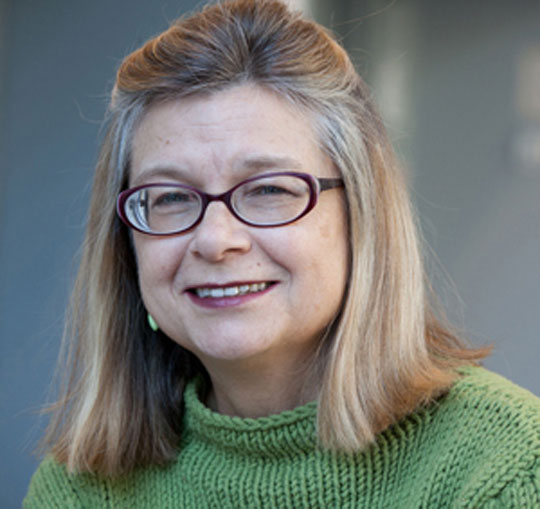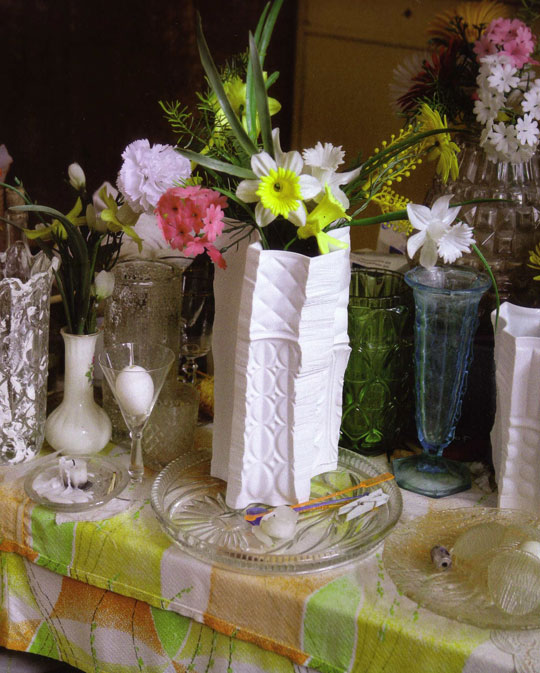About Susan Yelavich
Susan Yelavich is the Director of the Masters in Design Studies program and Associate Professor in the School of Art and Design History and Theory. Having worked in the studio, in publishing, in the museum, and in the academy, Yelavich brings an ecumenical perspective to the field of design studies, embracing related studies and histories of art and design within the context of humanities and sciences. In all of her work, she explores design as, simultaneously, a function of memory and projection of alternative futures.
Her most current research focuses on the relationship between textiles and architecture, the dynamics of global culture and design, the role of ornament in contemporary design, and the parallels between design and literature. She is the author of numerous essays and books, including: Contemporary World Interiors (2007), Pentagram Profile (2004), Inside Design Now, co-author (2003), Design for Life (1997) and The Edge of the Millennium: An International Critique of Architecture, Urban Planning, Product and Communication Design (1993).
Her most recent exhibition is “Deep Surface: Contemporary Ornament and Pattern,” Contemporary Art Museum Raleigh, N.C. (2011-12). She has served on the board of directors of the American Center for Design and the Modern Design Committee of the Russel Wright Design Center. Yelavich was awarded the Rolland Rome Prize Fellowship in Design from the American Academy in Rome in 2003-04. The former Assistant Director for Public Programs at Cooper-Hewitt, National Design Museum, she co-curated the 2003 National Design Triennial. Yelavich is a graduate of Brown University and Cranbrook Academy of Art.
Read on for Susan’s thoughts about the ideal MA Design Studies candidate, students following their affinities, her influences, current projects, a favorite vest, and more.
Is there a particular designer, design historian or even design/creation that has most influenced you personally and professionally?
Can I choose one of each?
I’d have to say that the figure who has affected me most is the architect Francesco Borromini (1599-1667). I’ve never experienced anything more powerful than the interior of Sant’ Ivo alla Sapienza in Rome. It was there that I began to fully appreciate the persuasions of the baroque. Borromini’s dizzying integration of concave and convex forms offers a profound aesthetic pleasure. But more than that, they speak to a re-orientation of perspective and a willingness to confound convention—all qualities needed today. I see that blissfully convoluted logic in projects that range from the formal (Maxim Velčovský’s Vase of Vases
to the adhoc (in the ‘wild’ architecture of the Balkans documented by Ivan Kucina).
As to the historian who deserves the credit for truly opening my eyes to the capacities of design, I have to credit the late William Jordy, professor of architectural history at Brown University when I was an undergraduate there. Jordy, as he was known to all of us, gave a famous assignment. Instead of writing about a building, a singular work of architecture, we had to write about buildings in relations to each other on a single street. He taught me to see the present as a hybrid of fictions about our pasts, and to understand those fictions as projections of different futures.
What untapped topics of research do you expect to emerge in the field of design studies?
So much depends on who our students are and the issues and subjects they care about. I always advise students to be open to new options but to recognize and work from their own affinities and strengths. Study and writing are major investments of energy, so it’s worth reflecting on what excites you, and what preoccupies you most.
I can imagine students who will be issue-driven, students who are driven by attraction to a particular design discipline, and students who want to explore design in relation to other disciplines altogether. Those who are concerned about issues (which could range from sustainability to food systems to education) will want to explore the role that design plays within those realms. For example, they might study how cultural conceptions of nature over time have led to the precarious state of the environment and are still affecting efforts to design more sustainably today.
Those students who come to the program from a specific field of design study or practice will want to explore how the disciplines that they know are expanding, how they are bleeding into other realms, and how they are fundamentally related to the ways we choose to live in the world. In this scenario, I can imagine projects that examine the role of professional design (i.e. communication design, urbanism) in a world where community- and self-initiated projects are rapidly growing.
I also look forward to working with students who want to explore the intellectual history of design. These students might investigate how design, as a form of tacit cultural knowledge, continues to be informed by mythology. They might consider the ways in which works of literature reveal how design affects human relationships. Or, they might examine how our conceptions of time and chronology have been changed by design from the advent of electric lighting to the digital 24/7. Design has operated under various names and with various understandings over time. So the possibilities for illuminating our knowledge of its dimensions are rich.
Why is Parsons the perfect storm for this new Design Studies program? What does Parsons offer in this program that perhaps other schools do not?
Two things: access to the spectrum of design practices and access to the spectrum of academic offerings at the New School. Our students can take graduate electives offered across Parsons and coursework in other subjects— such as history, philosophy, anthropology, sociology, and politics—amd they can take up to six credits of studio coursework. We want to ensure that our students’ scholarly investigations are informed by the best minds in their areas of inquiry, and we believe that they can be found here at Parsons and the New School.
How is a Design Studies program different from a Design History program?
Read my answer here.
Can you describe an ideal candidate for the program?
I expect we will have students who have studied art and design history, students who have practiced design, and students from fields such as journalism, literature, cultural anthropology, philosophy, and sociology to name just a few of the possibilities. We will have students that are fresh out of school and those who’ve been working for several years. All our students will need to write well, to enjoy thinking through writing. They will be intellectual border crossers, who think synthetically—raising questions and offering new ideas backed by new evidence.
Design is everywhere and in everything—and, of course, strong design can influence social change or improve quality of life. What was your favorite design in the past year and why?
This is really hard to answer because I don’t think of design in terms of “the year in review.” But I can say that I welcome the proliferation of bike lanes in New York City; that I am both awed and disturbed by reading on my iPad—I can never really sense where I am in a book; and I was utterly impressed by the scope of ideas and objects in Paola Antonelli’s exhibition “Talk to Me” at MoMA. (And truth be told, my favorite design acquisition last year was a vest from JunkyStyling in London.)
What is the most exciting thing about Design Studies today?
That it’s so young! It offers tremendous freedom in terms of its content at the same time it demands tremendous rigor.
Where do you see this program 10 years from now?
I see it complemented by a Ph.D. program, generating scholars who contribute to more fulsome understanding of the world as the sum of the objects and actions of design.
What is your favorite period in design history and why?
I tend to be drawn to transitional periods and times of flux. So in many ways our own time is most interesting to me. There are so many hybrid design practices emerging. The popularity of Parsons’ new MFA in Transdisciplinary Design is clear evidence of that. And, of course, Design Studies itself is a reflection of the current state of scholarship, in its stress on relational thinking.
What are some your own recent, current, or upcoming projects you’re excited about?
Just this past year I had the tremendous satisfaction of co-curating “Deep Surface: Contemporary Ornament and Pattern” at the Contemporary Art Museum in Raleigh. This year I’m developing a book called Possible: Design as World-Making, inspired by a course I’ve been teaching here at Parsons on the affects of design in the cultural context of globalization. But, of course, the most exciting project on my plate right now is planning for the first class to enter our program in Design Studies.





























